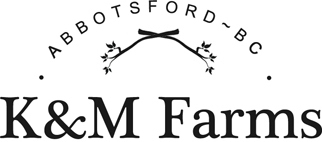THAWING FROZEN PRODUCT
Always thaw frozen product in a cold water bath. For chicken the kitchen sink works fine. Place a heavy object on the product (a pot with water in it) to ensure the product is fully submerged. A water bath will thaw frozen product much faster than being placed in the fridge because water is a better conductor of heat than air.
COOKING INSTRUCTIONS
I’m often asked ‘how do I cook my chicken or turkey?’ I have not provided cooking instructions based on oven temperature and the weight of the bird. Only minutes separate a fully cooked bird and one that is overcooked. Methods based on hours per pound err on the side of caution and usually result in overcooked, dry poultry.
No matter what way you cook your chicken or turkey, hot oven, slow oven, BBQ or deep fry it is safe to eat when the internal temperature reaches 165 oF. From that point on poultry starts to become dry.
Step 1 is using a digital meat thermometer where the sensor remains in the bird.
The current US Department of Agriculture food safe temperatures for poultry are available at:
http://www.foodsafety.gov/keep/charts/mintemp.html.
Health Canada recommends 165 degrees Fahrenheit for chicken. http://www.hc-sc.gc.ca/fn-an/securit/kitchen-cuisine/cook-temp-cuisson-eng.php
TIPS WHEN USING A MEAT THERMOMETER
• Insert your meat thermometer into the thickest part of the muscle (usually the breast or thigh)
• Place thermometer in the meat before roasting or when approximately two thirds cooked. At the point when the bird is two thirds cooked move the thermometer in and out to ensure it is at the coldest part of the meat. This ensures that you will be measuring the last part of the meat that comes to safe temperature.
• The temperature will move through the last 10 degrees Fahrenheit quickly so keep a close watch on the bird as it nears the correct temperature.
• After removing your bird from the oven, cover with a clean cloth and let sit for 15 – 30 minutes before carving. You will find the temperature will go up another 2 – 5 degrees Fahrenheit
Other Tips on Roasting Whole Chicken and Turkey
• Don’t put stuffing in the body cavity – do a stovetop or baked stuffing. To add drippings to baked stuffing remove the wing tips from the bird and place on top of the stuffing before covering for baking. I know this is a sensitive topic!! Without stuffing the bird will cook from the outside in and from the cavity out. With stuffing in the cavity it only cooks from the outside. This takes longer to cook the bird and usually results in overcooking the top breast meat. You are trading dryer breast meat for cavity stuffing!
• Cover the bird in some way whether a poultry roasting bag from the grocery store or aluminum foil or a covered roasting pan. We tuck our oiled bird in a brown paper bag, coated with olive oil so the bag won’t burn.
• Some people roast their birds breast side down. This is not the Martha Stewart way but makes sense. Beef roasts and pork roasts are roasted with the fat cap up. This enable the fat to move through the roast as it cooks – keeping it moist. With poultry we traditionally put the breast meat up. Same thing happens – the moisture flows down, out of the breast, during the cooking process. If the bird is cooked breast down the moisture flows to the breast meat rather than away from it.
